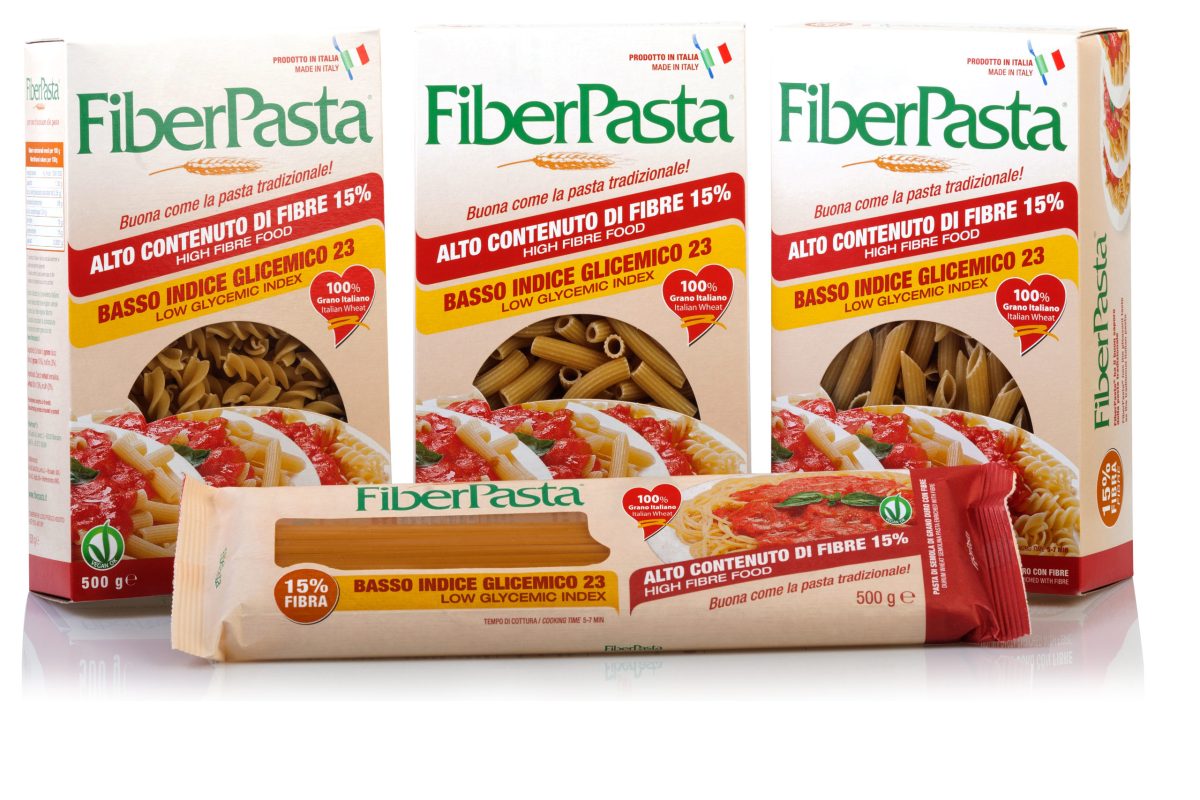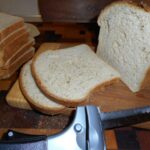Craving pasta but mindful of your blood sugar? Prepare to rediscover the joy of noodles! This exploration dives into a world of delicious, low-glycemic pasta alternatives, revealing their unique textures, vibrant flavors, and nutritional benefits. We’ll journey through a variety of options, from familiar favorites to exciting new finds, providing you with the knowledge and recipes to craft satisfying and healthy meals.
Imagine twirling vibrant strands of zucchini noodles, bursting with fresh pesto, or savoring hearty shirataki pasta in a rich tomato sauce – all without the blood sugar spike of traditional pasta. We’ll equip you with cooking techniques, cost comparisons, and creative recipe ideas to seamlessly integrate these alternatives into your culinary repertoire. Get ready to elevate your pasta game while prioritizing your well-being.
Cooking Methods for Low-Glycemic Pasta Alternatives
Cooking low-glycemic pasta alternatives requires a slightly different approach than traditional wheat pasta. Understanding the unique properties of each alternative – its texture, density, and tendency to stick – is key to achieving perfectly cooked, flavorful results. This section details optimal cooking methods for several popular options, ensuring you enjoy the best possible taste and texture.
Cooking Shirataki Noodles
Shirataki noodles, made from konjac yam, possess a unique, almost gelatinous texture. Their nearly flavorless nature makes them excellent vessels for absorbing the flavors of sauces and broths. Overcooking can lead to a mushy consistency, while undercooking leaves them too firm.
Optimal cooking time is typically 3-5 minutes in boiling water. No oil or salt is typically needed during boiling. After boiling, rinse thoroughly with cold water to remove any excess odor. To prevent sticking, gently separate the noodles with a fork or chopsticks while they cook. Avoid prolonged boiling, as this will result in a slimy texture.
Cooking Lentil Pasta
Lentil pasta, boasting a hearty and earthy flavor, requires careful attention to avoid overcooking, which can lead to a mushy texture. The cooking time depends on the shape and brand, so always refer to package instructions. Generally, expect cooking times to be slightly longer than traditional pasta.
Proper cooking involves simmering in salted boiling water until al dente. This usually takes around 8-12 minutes, but checking for doneness regularly is crucial. Avoid over-simmering, which can cause the pasta to fall apart. A light coating of olive oil after cooking can prevent sticking.
Cooking Chickpea Pasta
Chickpea pasta offers a slightly denser texture compared to traditional pasta, and a subtly nutty flavor. It tends to cook faster than lentil pasta, but overcooking can lead to a soft and mushy consistency.
Aim for a cooking time of 8-10 minutes in boiling salted water. Again, package instructions should be followed carefully. Stirring occasionally during cooking prevents sticking and ensures even cooking. After draining, a light toss with olive oil can improve texture and prevent clumping.
Cooking Kelp Noodles
Kelp noodles are incredibly delicate and require a gentler cooking approach. Unlike other options, boiling is not necessary and can lead to a mushy texture. Instead, they are best rehydrated in warm or cold water for 5-10 minutes.
Simply submerge the dried noodles in warm or cold water, and let them sit until softened. No need for additional cooking. Rinse them gently after rehydration. Their delicate nature makes them prone to tearing, so handle them carefully.
Cooking Zucchini Noodles
Zucchini noodles, also known as zoodles, are best prepared using raw or lightly cooked methods to retain their vibrant color and crisp texture. Boiling them can lead to a mushy, unpleasant texture.
Raw zoodles can be used directly in salads or cold dishes. For a warmer approach, lightly sauté them in a pan with olive oil for a few minutes until slightly tender-crisp. Overcooking will result in a soggy texture. Avoid over-sautéing, aiming for a tender-crisp texture that still holds its shape.
Step-by-Step Guide: Cooking Lentil Pasta
- Bring a large pot of salted water to a rolling boil. The amount of water should be generous, allowing the pasta to move freely.
- Add the lentil pasta to the boiling water, stirring gently to prevent sticking. The water should return to a boil within a minute.
- Reduce heat to a simmer, maintaining a gentle boil, and cook according to package directions, typically 8-12 minutes. Stir occasionally to prevent sticking.
- Test for doneness by removing a piece of pasta and biting into it. It should be cooked through but still firm to the bite (al dente).
- Once cooked, immediately drain the pasta in a colander. Rinse with cold water to stop the cooking process, if desired.
- Toss the cooked pasta with a light drizzle of olive oil to prevent sticking and enhance flavor.
Recipe Ideas Featuring Low-Glycemic Pasta Alternatives

These recipes showcase the versatility of low-glycemic pasta alternatives, transforming them from simple substitutes into the stars of delicious and satisfying meals. Each recipe highlights different flavor profiles and textures, demonstrating the wide range of culinary possibilities. We’ll be using shirataki noodles, zucchini noodles, lentil pasta, chickpea pasta, and kelp noodles as our bases.
Mediterranean Shirataki Noodle Salad
This vibrant salad offers a light yet satisfying meal, perfect for warm weather. The shirataki noodles provide a neutral canvas for the bright Mediterranean flavors, resulting in a refreshing and healthy dish. The combination of textures – the delicate noodles, juicy tomatoes, and salty feta – creates a delightful sensory experience.
1. Cook shirataki noodles according to package directions, rinsing thoroughly afterward to remove any lingering odor.
2. In a large bowl, combine the cooked shirataki noodles with chopped cucumber, tomatoes, red onion, Kalamata olives, and crumbled feta cheese.
3. Whisk together olive oil, lemon juice, dried oregano, salt, and pepper for the dressing.
4. Pour the dressing over the salad and toss gently to combine.
5. Garnish with fresh parsley or dill before serving. Enjoy the light and refreshing flavors!
Creamy Pesto Zucchini Noodles with Grilled Chicken
This recipe transforms zucchini noodles into a luxurious and satisfying meal. The creamy pesto sauce coats the delicate zucchini noodles beautifully, while the grilled chicken adds protein and a smoky char. The combination of flavors and textures creates a sophisticated yet simple dish.
1. Spiralize zucchini into noodles using a spiralizer or vegetable peeler.
2. Grill chicken breasts until cooked through, then slice into strips.
3. In a pan, sauté zucchini noodles until slightly tender-crisp.
4. Toss the noodles with pesto sauce, adding a splash of cream or coconut milk for extra richness.
5. Add the grilled chicken to the noodles and toss gently to coat.
6. Garnish with grated Parmesan cheese (optional) and fresh basil leaves before serving. The creamy pesto perfectly complements the delicate zucchini noodles.
Spicy Lentil Pasta with Sausage and Roasted Vegetables
This hearty and flavorful dish utilizes lentil pasta, showcasing its robust texture and ability to hold up to bolder flavors. The roasted vegetables add sweetness and depth, while the spicy sausage provides a satisfying kick. The overall result is a comforting and flavorful meal.
1. Cook lentil pasta according to package directions.
2. While the pasta cooks, roast chopped bell peppers, onions, and zucchini with olive oil, salt, pepper, and your preferred spices (e.g., paprika, chili powder).
3. Brown Italian sausage in a pan, breaking it up as it cooks.
4. Drain the cooked lentil pasta and add it to the pan with the sausage and roasted vegetables.
5. Toss everything together, adding a splash of pasta water if needed to create a light sauce.
6. Garnish with fresh parsley and a sprinkle of red pepper flakes for extra heat. The hearty lentil pasta perfectly complements the spicy sausage and sweet roasted vegetables.
Comparing the Cost and Accessibility of Alternatives
Choosing a low-glycemic pasta alternative often involves considering not only taste and nutritional benefits but also practical factors like cost and availability. This section provides a comparative analysis of five popular options, highlighting their price points and accessibility in typical grocery stores, along with potential substitutes if your preferred choice is unavailable.
Cost and Availability of Low-Glycemic Pasta Alternatives
The following table summarizes the average cost per serving and accessibility of five common low-glycemic pasta alternatives. Prices are estimates and may vary depending on brand, location, and retailer. Accessibility reflects general availability in mainstream grocery stores, with “High” indicating widespread availability, “Medium” indicating availability in larger stores or specialty sections, and “Low” indicating limited availability, often requiring online ordering or visits to specialty stores.
| Name | Cost per Serving (Estimate) | Availability | Substitutions |
|---|---|---|---|
| Shirataki Noodles | $1.00 – $1.50 | Medium | Kelp noodles, zucchini noodles (zoodles) |
| Lentil Pasta | $2.00 – $3.00 | High | Chickpea pasta, other legume-based pastas |
| Chickpea Pasta | $2.50 – $3.50 | High | Lentil pasta, edamame pasta |
| Vegetable Pasta (e.g., butternut squash) | $2.50 – $4.00 | Medium | Zucchini noodles, sweet potato noodles |
| Kelp Noodles | $1.50 – $2.50 | Medium | Shirataki noodles, thinly sliced cucumbers |
Creating a Delicious Low-Glycemic Pasta Dish
This recipe showcases a vibrant and flavorful dish using shirataki noodles, a popular low-glycemic pasta alternative. Shirataki noodles, made from konjac yam, are nearly calorie-free and have a neutral taste, making them a versatile base for various sauces and flavor profiles. This recipe emphasizes fresh ingredients and simple techniques to create a satisfying and healthy meal.
Mediterranean Shirataki Pasta with Lemon-Herb Dressing
This recipe provides a light yet satisfying meal, perfect for a warm evening or a healthy lunch. The vibrant colors and fresh flavors make it visually appealing and delicious.
Yields: 2 servings
Prep time: 15 minutes
Cook time: 5 minutes
Ingredients
This section details the ingredients required for the recipe, with precise measurements for accurate replication. The quality of ingredients will directly impact the final taste and presentation of the dish.
- 8 ounces shirataki noodles (rinsed thoroughly)
- 1 cup cherry tomatoes, halved
- 1/2 cup Kalamata olives, pitted and halved
- 1/2 cup crumbled feta cheese
- 1/4 cup fresh basil leaves, chopped
- 2 tablespoons olive oil
- 2 tablespoons lemon juice
- 1 clove garlic, minced
- 1/2 teaspoon dried oregano
- Salt and freshly ground black pepper to taste
Instructions
This section provides a step-by-step guide, with detailed descriptions of each step and the visual appearance of the dish at different stages. Following these steps ensures a successful and aesthetically pleasing outcome.
- Prepare the Noodles: Rinse the shirataki noodles thoroughly under cold running water to remove any excess odor. Their initially translucent, almost gelatinous appearance will remain largely unchanged at this stage.
- Sauté the Aromatics: Heat the olive oil in a large skillet over medium heat. Add the minced garlic and sauté for about 30 seconds, until fragrant. The garlic will become lightly golden brown, releasing its pungent aroma.
- Combine Ingredients: Add the halved cherry tomatoes and Kalamata olives to the skillet. Cook for 2-3 minutes, until the tomatoes begin to soften slightly. The tomatoes will turn a deeper, richer red, while the olives will maintain their dark, glossy hue.
- Add Noodles and Dressing: Add the rinsed shirataki noodles to the skillet. Pour in the lemon juice, and sprinkle with dried oregano, salt, and pepper. Toss gently to combine. The noodles will absorb the lemon juice and the sauce will coat them evenly. The overall color of the dish will become brighter and more vibrant.
- Finish and Serve: Remove from heat and stir in the chopped basil and crumbled feta cheese. The vibrant green of the basil and the creamy white of the feta will create a visually appealing contrast against the red tomatoes and dark olives. The finished dish should have a slightly glossy sheen from the olive oil and lemon juice.
Plating the Dish
This section details how to plate the finished dish for optimal visual appeal. Proper plating enhances the dining experience and highlights the dish’s ingredients and colors.
Divide the pasta evenly between two plates. Arrange the mixture artfully, ensuring a visually appealing distribution of the colorful ingredients. A sprinkle of extra feta cheese and a few fresh basil leaves as a garnish will add a touch of elegance and enhance the overall presentation. The final plated dish should be a colorful and appetizing mix of textures and colors, showcasing the fresh ingredients.
From the satisfying chew of lentil pasta to the delicate lightness of kelp noodles, the world of low-glycemic pasta alternatives offers a delicious and diverse landscape for culinary exploration. This guide has armed you with the knowledge and inspiration to confidently experiment with these healthier options, creating delectable dishes that nourish your body and delight your taste buds. Embrace the versatility of these alternatives, and discover a new level of enjoyment in your pasta creations – guilt-free and undeniably delicious.
Query Resolution
Are low-glycemic pasta alternatives suitable for everyone?
While generally healthy, individual dietary needs vary. Consult a doctor or registered dietitian if you have specific health concerns or allergies before making significant dietary changes.
How do I store low-glycemic pasta alternatives?
Storage methods differ depending on the type of pasta. Refer to the product packaging for specific instructions. Generally, refrigeration is recommended for fresh alternatives, while dried varieties can be stored in a cool, dry place.
Can I freeze low-glycemic pasta?
Freezing is possible for some alternatives, but it can affect texture. It’s best to freeze cooked pasta, not raw. Check individual product recommendations.
Where can I find low-glycemic pasta alternatives?
Many health food stores, specialty grocery stores, and online retailers carry a wide selection. Check your local supermarket’s health food aisle as well.


